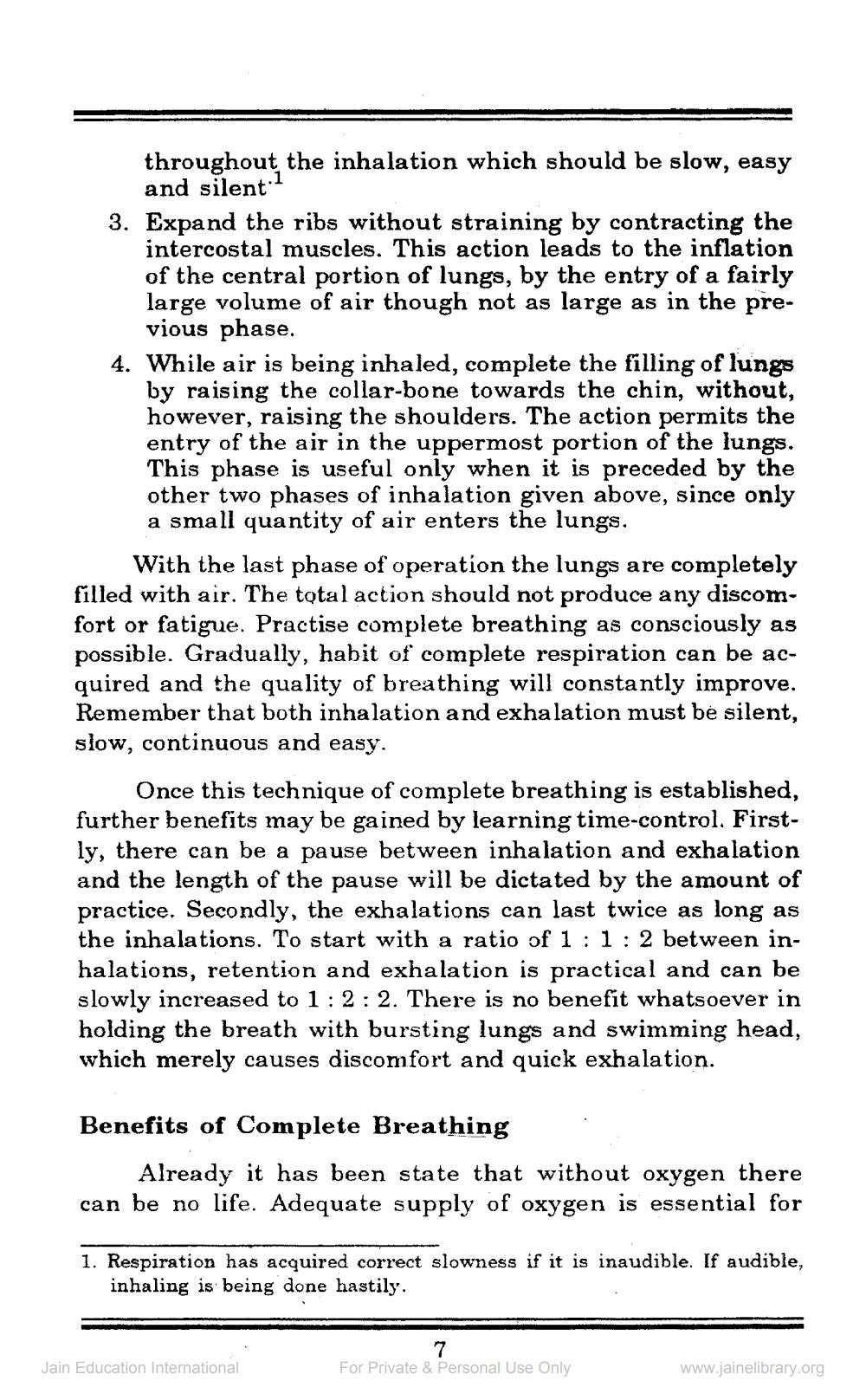________________
throughout the inhalation which should be slow, easy and silent.1
3. Expand the ribs without straining by contracting the intercostal muscles. This action leads to the inflation of the central portion of lungs, by the entry of a fairly large volume of air though not as large as in the previous phase.
4. While air is being inhaled, complete the filling of lungs by raising the collar-bone towards the chin, without, however, raising the shoulders. The action permits the entry of the air in the uppermost portion of the lungs. This phase is useful only when it is preceded by the other two phases of inhalation given above, since only a small quantity of air enters the lungs.
With the last phase of operation the lungs are completely filled with air. The total action should not produce any discomfort or fatigue. Practise complete breathing as consciously as possible. Gradually, habit of complete respiration can be acquired and the quality of breathing will constantly improve. Remember that both inhalation and exhalation must be silent, slow, continuous and easy.
Once this technique of complete breathing is established, further benefits may be gained by learning time-control. Firstly, there can be a pause between inhalation and exhalation and the length of the pause will be dictated by the amount of practice. Secondly, the exhalations can last twice as long as the inhalations. To start with a ratio of 1: 1 : 2 between inhalations, retention and exhalation is practical and can be slowly increased to 1: 2: 2. There is no benefit whatsoever in holding the breath with bursting lungs and swimming head, which merely causes discomfort and quick exhalation.
Benefits of Complete Breathing
Already it has been state that without oxygen there can be no life. Adequate supply of oxygen is essential for
1. Respiration has acquired correct slowness if it is inaudible. If audible, inhaling is being done hastily.
Jain Education International
7
For Private & Personal Use Only
www.jainelibrary.org




